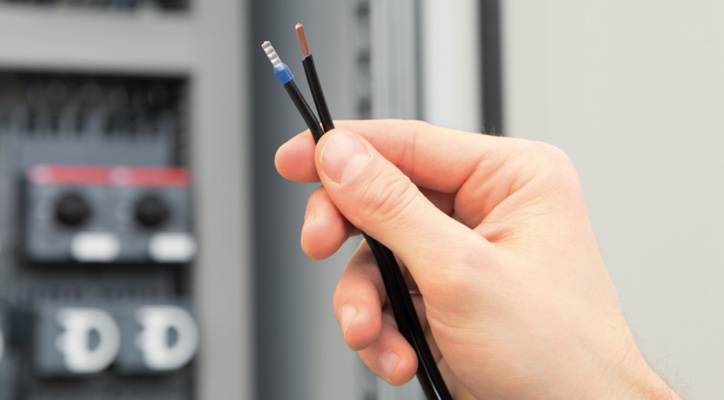Simplify panel building
Berea Janzen
Product Marketing Manager – EPR, Pilot Devices, Limit Switches
ABB Electrification Products
In every assembly process, simplicity saves time and money. Two simple technologies that simplify panel building are push-in connections and compact pilot devices. Learn more about how they can help improve your assembly process.
Anyone who has been part of a Lean Six Sigma process-improvement team knows they typically rely on some very complex statistical methods. But not all of the improvements result from sophisticated tools like regression analysis, attribute agreement analysis, and t-Tests.
As someone who’s been part of a number of process-improvement projects, I know there are also a few simple but sure-fire ways to reduce errors and costs while accelerating a process. One of them is to reduce the number of process steps or activities. When it comes to panel building, there are two types of products that enable panel makers to simplify panel building.
Connections with a simple push
Push-in terminal connections are an increasingly popular wiring method on devices like contactors. Both solid-wire and ferrule connections are as easy as inserting the wire end into the cable hole, no tool required. For stranded wire, a flat-blade screwdriver is needed to open the terminal, but no torqueing or screwing is required.
It’s easy to see how this is much faster than tightening terminal screws, typically reducing assembly time by half. It also eliminates the time needed to carefully torque each connection. The push-in connectors are engineered to ensure the required torque. As a confidence check, installers can check connections with a simple tug test.
Unlike screw-in connections, push-in connections are vibration-proof. Wires won’t vibrate loose in transit or during use. You never have to retighten them, increasing the reliability of the panel and reducing maintenance. An added benefit in high-volume panel shops is that push-in connectors enable automated assembly; the feature is very robot-friendly.
Push-in connections aren’t a new concept. They have long been embraced by electrical-equipment manufacturers in Europe. In the US, acceptance has been slower but is accelerating as manufacturers become more confident in the technology and more aware of the benefits. Many major panel shops, eager to reduce costs and production time while increasing panel reliability, have adopted push-in connections as their preferred technology.
One instead of many
Another simple process-improvement tactic is to reduce the number of components required in an assembly. Fewer parts means fewer steps in the production area. One way panel builders are reducing their component count is with all-in-one pilot devices. Rather than building up the device by attaching contacts, the pilot device installs as one unit.
The all-in-one design also eliminates the need to sort through and find the correct contacts for the device, and eliminates the possibility of assembling the wrong contacts.
The speed benefit of this design is obvious. Perhaps less obvious, but just as important in terms of cost reduction, is the inventory aspect. The all-in-one pilot device reduces the need to stock a range of contacts for your panel shop.
Some shops prefer the ability to customize or configure pilot devices on a per-panel basis. For them, the all-in-one design may not be the right choice. But for most panel shops, and particularly higher-volume shops, building up pilot devices from multiple components makes little sense.
Almost every electrical and mechanical device made today is increasingly modular, manufactured from sub-assemblies rather than individual components. This speeds and simplifies production and reduces product failures. When maintenance is required, service often consists of a simple module swap. Those same benefits come with the all-in-one pilot device.
A simple choice
Technology like push-in terminals and all-in-one pilot devices won’t revolutionize your panel-building process. Instead, like most changes that result from continuous-improvement efforts, they will create incremental but measurable benefits. Still, saving 30 seconds on each connection in a panel can add up to significant savings.
Both push-in connections and all-in-one pilot devices will absolutely simplify and speed panel assembly while increasing reliability. These technologies typically are no more, or only slightly more, expensive than the alternatives, ensuring reduced panel-production costs.
Panel builders interested in a simple way to quickly enhance their production process should consider whether products like push-in connections and all-in-one pilot devices make sense for their shops.


